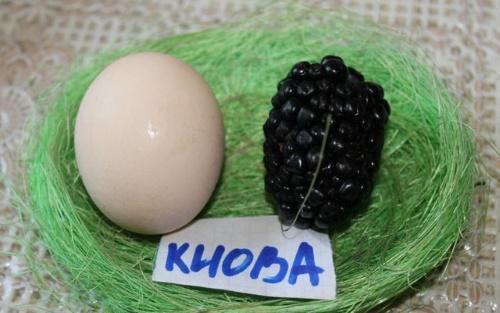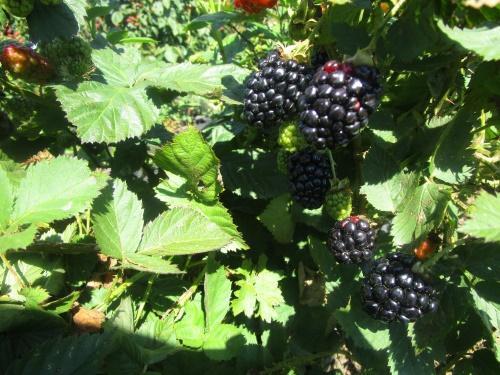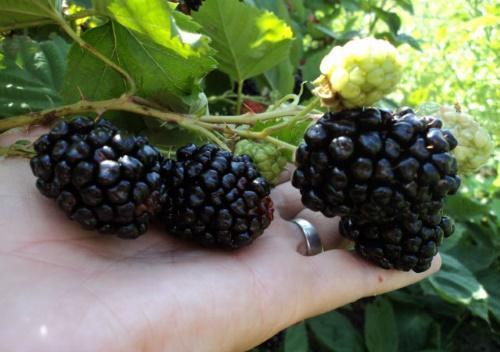Characteristics of the largest blackberry of the Kiova variety
 When choosing fruit and berry crops, gardeners make high demands on the abundance and quality of the crop, including with respect to blackberries. Useful black berries are often grown in summer cottages. One of the most favorite varieties is the Kiova blackberry, according to the description and characteristics of which it is the largest-fruited type of garden shrub.
When choosing fruit and berry crops, gardeners make high demands on the abundance and quality of the crop, including with respect to blackberries. Useful black berries are often grown in summer cottages. One of the most favorite varieties is the Kiova blackberry, according to the description and characteristics of which it is the largest-fruited type of garden shrub.
Varietal features of Kiova
Blackberry Kiova is a late-ripening variety, it grows as an upright bush, the height of the shoots exceeds 1.6 m. Densely leafy, the leaves are painted in a bright emerald color. It blooms with white inflorescences with a pale pink tint.
It is noteworthy that upright branches hold the average harvest well, but if there are a lot of ovaries, it is better to set up a support or tie them up so that they do not break.
In summer, starting from mid-July, very large berries begin to ripen on the bushes - in other words, they simply cannot be called. Some specimens weigh 20 g each, and the average weight of one berry is about 15 g. The shape of the blackberry is standard, rounded-elongated, black, with a glossy sheen. The seeds in the berries are small and almost invisible. The taste is dominated by sweet notes, very little sourness, but the aroma is amazing.
Fruiting of blackberries continues for 6 weeks, while even the last harvest retains its original size.
Advantages and disadvantages of the variety
In addition to the large size of the harvest, the Kiova blackberry has other advantages that distinguish it favorably from other varieties, namely:
- berries are hard enough and tolerate transportation well;
- with proper care, the bush will delight you with a bountiful harvest;
- long-term fruiting;
- high winter hardiness - uncovered bushes do not freeze even at 23 degrees of frost;
- good resistance to diseases, in particular against rot, anthractosis, rust and powdery mildew.
Of the shortcomings, perhaps, there is only one drawback: all parts of the shrub, both shoots and leaves, are covered with rather long and sharp thorns, which complicates the care of blackberries and picking berries.
It is also worth noting that extended fruiting sometimes causes trouble when growing this variety in the northern regions: the berries simply do not have time to ripen everything before the cold snap begins.